review The newest version of Samsung’s light and cheap laptop running Google’s browser-focused Chrome OS operating system has landed in Australia. But does this limited laptop do enough to wean users away from the traditional PC experience and into a browser for all of their tasks? Read on to find out.
Design
When you first pick up Samsung’s new Chromebook, you could easily be excused for thinking it’s a MacBook Air. The model we tested had a similar 11″-ish screen, a very similar light gunmetal grey/silver casing, and the keyboard has the same black chiclet feel about it. The Chromebook is also quite thin, at 17.5mm at its thickest, and it is quite light at 1.1kg (the 11″ Air weighs 1.08kg). The two are so similar, in fact, that once or twice during the several weeks of the review period, we actually mistook the Chromebook lying around our office for the MacBook Air we use as our primary laptop.
Of course, once you get a bit closer to the Chromebook, you start to notice differences that tell you that the Chromebook is a significantly cheaper laptop than the Air. For starters, the Chromebook’s casing is composed of a silver plastic material rather than the MacBook’s aluminium. Its hinge, its keys, the little coverings over some of its ports and even its screen contributes to a feeling that this isn’t a premium laptop, but rather something from lower down in the market.
None of this is bad, however. The Chromebook retails in Australia for a recommended retail price of $349. The MacBook Air starts at three times that price — $1,099. Yet there’s only a moderate difference in physical build quality between the two models, and we’d say that most people who picked up the two laptops side by side wouldn’t see a huge difference in quality between the pair, physical design-wise. The MacBook Air is a much nicer machine design-wise than the Chromebook, but the difference between the pair in terms of their build quality online doesn’t really justify the Air’s increased $750 price tag.
In terms of Samsung’s other design choices with the Chromebook, what you’ll mainly notice is that this is quite a minimalistic device. On its left-hand side you get the unit’s 3.5mm headphone jack (which can also take a microphone line in), alongside its 3-in-1 multi-card slot (it takes SD, SDHC and SDXC options). There’s nothing on the laptop’s right-hand side, while on its back it features a small port for attaching the unit’s power brick, next to a HDMI out port, one USB 3.0 port, and one USB 2.0 port. And there’s a couple of small speaker grills on the bottom.
Thats literally it. The Chromebook isn’t a netbook, but it’s not since the netbook era that we’ve seen such a minimalist laptop in the Delimiter office. This is really a limited machine for a limited purpose, and it shows in the unit’s design.
Features
The most notable aspect of the Chromebook’s featureset is that it’s the first laptop we’ve seen in ages that doesn’t run an Intel chip. Instead, it runs what Samsung describes as an Exynos 5250 Dual (1.7GHz, 1MB L2 Cache) processor, which is based on ARM’s line-up of CPUs that have found popularity in mobile devices.
The unit comes with 2GB of DDR3L RAM running at 800MHz, an 11.6″ HD LED display which can display a resolution of 1366 by 768, and storage space is provided by a 16GB eMMC card. Yup, you read that right — there’s no hard disk to speak of here, so you won’t be storing your entire MP3 collection on the Chromebook. Graphics memory is also quite limited as it’s shared with the main system RAM.
There’s a 3W stereo speaker (consisting of two 1.5W units), a 0.3 megapixel front-facing camera, and an internal mic for videoconferencing duties. And of course the Chromebook supports the 802.11 a/b/g standards for Wi-Fi access.
There’s no Ethernet port, so this is a wireless-only device. There’s no Bluetooth and no VGA out port — you’re limited to HDMI. However, there’s also no fan on the CPU or other chipsets — meaning the Chromebook runs completely silently. Its battery is a two-cell model at 30Wh.
There is a hidden port on the unit’s back for a SIM card for 3G mobile broadband — but we don’t even want to guess how or whether that will work in Australia, especially given the unit’s Chrome OS operating system.
And while we’re on that operating system, let’s go into it a little bit. What precisely can the Chromebook do and not do? Apart from its different CPU architecture, which doesn’t really manifest itself much to the end user, the Chrome OS is the main aspect of the Chromebook which will tell the end user that this really isn’t a stereotypical Windows or Mac laptop.
When we were testing our unit, we got a number of questions from friends and family about the Chromebook — especially considering that the model is being heavily advertised in some places such as Sydney’s Pitt St Mall at the moment. After attempting to explain the Chromebook to a few people in more detail, we settled on the quick and easy answer: “All it does is have the Chrome web browser. It’s a laptop which is 100 percent focused on its web browser.”
This is the easiest way to understand the Chromebook. When you log into the laptop (which you do by logging into your Google account), you are presented with a set of standard Google apps — ranging from Chrome itself, which functions as a fully fledged web browser, the same as it does on Windows, Mac OS X or Linux, to YouTube, Gmail, Google Docs and so on. All of these apps open within the Chrome browser itself — they’re just new tabs or new windows.
There are some limited settings which you can tinker with for the Chromebook that are tied to the operating system on the device itself — pretty similar to the Chrome browser’s own settings page. But fundamentally, when we tried to do absolutely anything on the Chromebook, it directed us through its Chrome browser, usually to a Google service of some kind.
One feature which really sold us on the unit was the way that it auto-populates web apps such as Chrome with your existing Google login. So, for example, if you go to the YouTube app, you’ll find yourself logged into YouTube and your channel subscriptions right there. This is the way that Google’s Android operating system (especially on stock Android devices such as the Nexus 4) works as well on mobiles, and we normally like it, except when Gmail tries to take over our mobile contacts. It works well on the Chromebook too. In addition, you can also ‘reset’ the Chromebook back to its basic install state — as you can with Android. We really liked this feature ported from Google’s mobile operating system and wish other laptop manufacturers would pick it up.
Of course, you will find yourself asking yourself, when using the Chromebook, whether Chrome OS is really a feature — or whether it’s a lack of a feature. If you compare Chrome OS to modern hard disk-based operating systems such as Windows, Mac OS X or even Linux (or indeed, to mobile operating systems such as iOS, Android or Windows Phone 8), what you’ll quickly realise is how limited Chrome OS really is. Sure, you can do most tasks in 2013 through a web browser, but there are many, many tasks that you can’t do through a browser, and a lot of software that is best run on a normal hard disk and not from the cloud.
In this context, the Chromebook represents an incredible compromise compared to traditional laptops. Its featureset really is hideously limited compared with traditional laptops as a result.
Performance
Let me say this right up-front: The Chromebook performed much better than we expected.
Your writer came into this review expecting a similar experience from the Chromebook to the sort of experience netbooks delivered several years ago. Most things are possible on netbooks, but not really fun. Low-powered CPUs, limited hard disk space and a cut-down operating system tends to result in users reaching instead for their traditional heavy laptops. And in a world increasingly populated by Apple’s popular light and thin MacBook Air laptops (at least amongst our peer group), one doesn’t even really need to sacrifice power for mobility these days — or power for weight.
However, what we found when actually using Samsung’s Chromebook was something quite different. The device’s simplicity and very strong integration with Google services that we use everyday such as Gmail, Google Reader, Google Docs, YouTube and so on meant that in an office filled with half a dozen smartphones, tablets, laptops and even desktop PCs, the Chromebook rapidly found its niche as the quickest device to reach for for quick access with a full-sized keyboard to these kinds of Google services.
Don’t get me wrong — the current crop of ultrabooks, smartphones and tablets on the market do a great job of providing access to the Internet in all its forms. However, if you mainly want to use Google services for lightly browsing and consuming content, and if you want to do so while using a device which sits easily on any surface due to its laptop form factor, with the additional desire for a full-sized keyboard, then the Chromebook is likely to become your go-to gadget for that particular habit.
Almost accidentally, your writer found himself using the Chromebook for hours and hours, for instance, to watch YouTube videos while lying in bed or on the couch, peppered by intermittent bouts of writing articles, answering email, going through RSS feeds and so on.
In this context, as long as you know what the Chromebook does do very well (web access, especially Google services) and what it doesn’t (usually, anything else), it will serve as a very capable device for you in those bounds. We didn’t detect any jagginess or slowdown in the use we put the Chromebook to, despite its ARM processor, although of course we couldn’t easily test it with the kinds of modern video games we tend to play on our desktop PC. And it’s battery life is pretty solid for the purpose it’s built for — it will last most of a work day of moderate to heavy use, even if you’re watching YouTube videos in HD. Its screen quality, while not fantastic, is more than serviceable enough that we didn’t notice much difference between its screen a much higher priced laptops, and it’s a similar story with its smallish speakers. They do the job.
Of course, there are a few caveats. The Chromebook wasn’t as solid at picking up our office Wi-Fi (which is a few rooms away in the building) as our standard MacBook Air laptop; its webcam is of pretty poor quality, and there’s a nasty effect when you open its screen from sleep that reminds one of the way old cathode ray tube televisions used to turn on and off. Additionally, its trackpad and keyboard aren’t up to the gold standard set by Apple — despite the fact that higher-end Samsung laptops we’ve tested recently are stellar. The keyboard and trackpad here is good, but still feels a little cheap.
However, overall, this is a classic case of a device punching above its weight. For $349, we didn’t expect to get anything near this good from the Samsung Chromebook. We were really surprised by how good its performance was.
Conclusion
Samsung’s new Chromebook is admittedly a severely limited device designed for one purpose — providing quick and easy access to online services, especially Google’s own online services. It’s more of an appliance than a complex multi-layered and powerful device such as a modern laptop. However, it does such a stellar job of delivering on that aim, and fitted into our own highly Internet-driven life so quickly, that we can’t help but recommend it.
In your writer’s review practice for Delimiter, we tend to normally review at least one device per week; sometimes, during peak periods, it can be a lot more. In this context (meaning up to three or four dozen “hot” new devices come through our hands every year), it is rare that a device ‘sticks’, in the sense that we want to go out and purchase one ourselves, because we miss it too much when it’s gone. This, in your writer’s view, is the ultimate test of a device — not whether the device is a good one, but whether the reviewer wants one themselves. After all, my central theory when writing articles on Delimiter is that I am writing recommendations for other people more or less like myself.
Over the past several years, there have only been a handful of devices which passed this test. Smartphones from HTC, Samsung, LG and Apple have made the grade (the One XL, the GS3, the Nexus 4 and the iPhone 5), as well as tablets such as the iPad Mini and Nexus 7. Apple’s new iMac line is another example, as is the new FetchTV box which launched earlier this year.
There’s no doubt that the Samsung Chromebook is not for everyone. If you want a full-featured laptop capable of running traditional applications and storing hundreds of gigabytes of data, look elsewhere. If you want something in a tablet form factor and rarely create any new content to be delivered online, again, look elsewhere.
If, however, you are a heavy user of web-services, especially Google services such as YouTube, and you want a cheap, thin, light and comfortable laptop to access such services when you’re away from your desk (likely to augment your existing desktop PC), look no further. If you spend as much of your time in a web browser as I do, you’re going to really like the cheap-as-chips Chromebook. On paper, I didn’t think I would. But in practice, I really did. And I’m not ashamed to admit it.
Image credit: Samsung

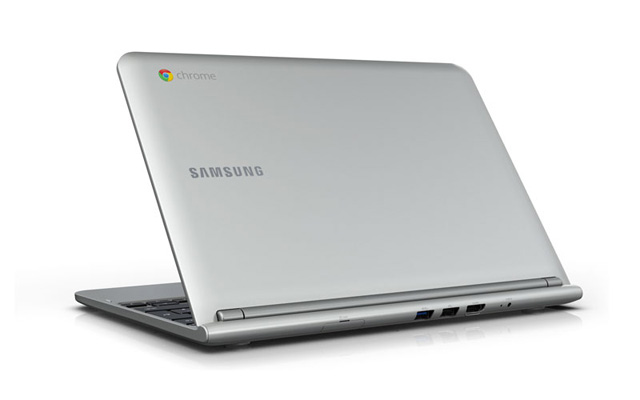
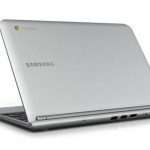
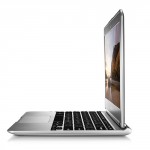
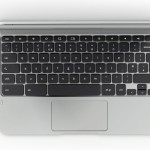
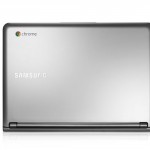
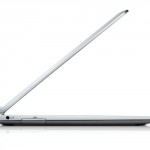
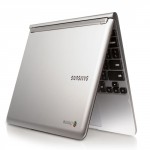
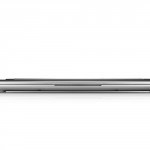
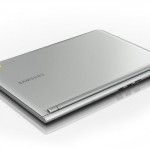
I enjoyed reading this review. I would prefer it if you toned down your conversational style.
Hi, I live in the UK and have had an earlier version Chromebook 5 for about 9 months now. I’ve been a heavy user of PCs over the years for wordprocessing, data handling in excel and using the web and email.I got it because my present Toshiba Sat Pro was getting much slower and was very cumbersome to carry.
I’ve found the Chromebook to be just a revelation.
Getting online takes seconds rather than up to 10 minutes.
I never have to update anything -its all done by Google.
There’s no local security necessary – as everything is installed in the Google cloud its all done far better by Google.
There’s no Windows – fantastic. The Google word processing and spreadsheets are absolutely fine.
It runs pretty well cold so laptop usage is very comfortable.
If you drop it (as I have done a couple of times) the case does not break and there’s no hard disk to break (the 16 Gb local storage is on a chip).
The screen clarity and resolution is superb.
Streaming films via the chrome book to the TV is easy.
Its great for photos – the PIXIR editor app is excellent.
The touch pad is just fine once you get used to its way of working.
Not having a caps lock turns out to be a very good thing for me – I often forgot I’d put the caps lock on!
As its so light and has about 8 hrs battery life I also have the chromebook with me everywhere I go.
Free wifi is available pretty well everywhere these days (cafes, supermarkets, libraries, golf clubs …) so I use it also as a phone (available in gmail – big advantage for me no-one can call you back!) as well as for regular gmail. There is sufficient local storage for scratchpad working off line on the train or bus. You can also view films – excellent resolution and sound. The only extra thing I’ve needed to buy was a good stereo headphone/microphone set ( which at £70 was just half the cost of the Chromebook 5!)
Overall its the best bit of technology I’ve ever bought. I can only guess that the reason most people continue to purchase relatively very expensive laptops – with their ongoing high update expenses – is lack of experience of using a chrome book or maybe a failure by manufacturers to market its benefits sufficiently.properly.
I guess that Google Reader integration won’t mean much, for much longer :<
Any reason / justification for the $100 difference in price between this unit here and America?
Not that I know of ;)
Australian Tax is the reason. It is a lot higher than in the States.
But a hundred bucks on a $250 item? That’s more than a third!
This must rank with Adobe for being unjustified – except because it is a lot cheaper than an adobe product, I can’t get on a plane, go to America, purchase the product and spend less cash…
I’m interested in one of these two. Chiefly so I can give it to my partner who keeps absconding with my Macbook Air so she can watch iView. That said, quite a few developers have been taken with this machine; the Crouton project (https://github.com/dnschneid/crouton) and Chromebook’s “Developer Mode” allows you to turn this into a lightweight Linux machine.
Prospective purchasers might want to hold fire for a week or so… there are rumours that these Chromebooks will be getting rev’d at the Google I/O conference next week (May 15-17).
gah, “two” = “too”.
I’m thinking of getting one of these devices as a travel machine; something to take with me when working interstate or overseas. Not least because in taking it to places like China where the risk of your main device being compromised is high, I can feel less paranoid.
“There is a hidden port on the unit’s back for a SIM card for 3G mobile broadband — but we don’t even want to guess how or whether that will work in Australia, especially given the unit’s Chrome OS operating system”
That is a bit weak, for a tech reviewer. Nobody expects you to guess, but maybe you could find out.
You can install Linux on this chromebook if you want a full featured OS. I suggest you check out Bodhi Linux ARM. It runs well and has no bloat.
Renai: Any comments on ability to hit a printer on a local network, or to connect same via USB?
C!
Comments are closed.